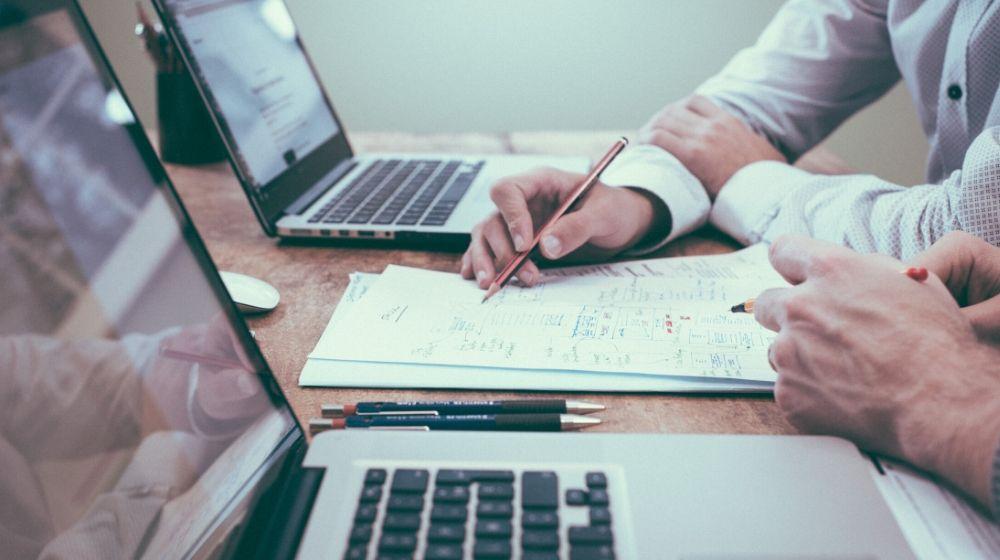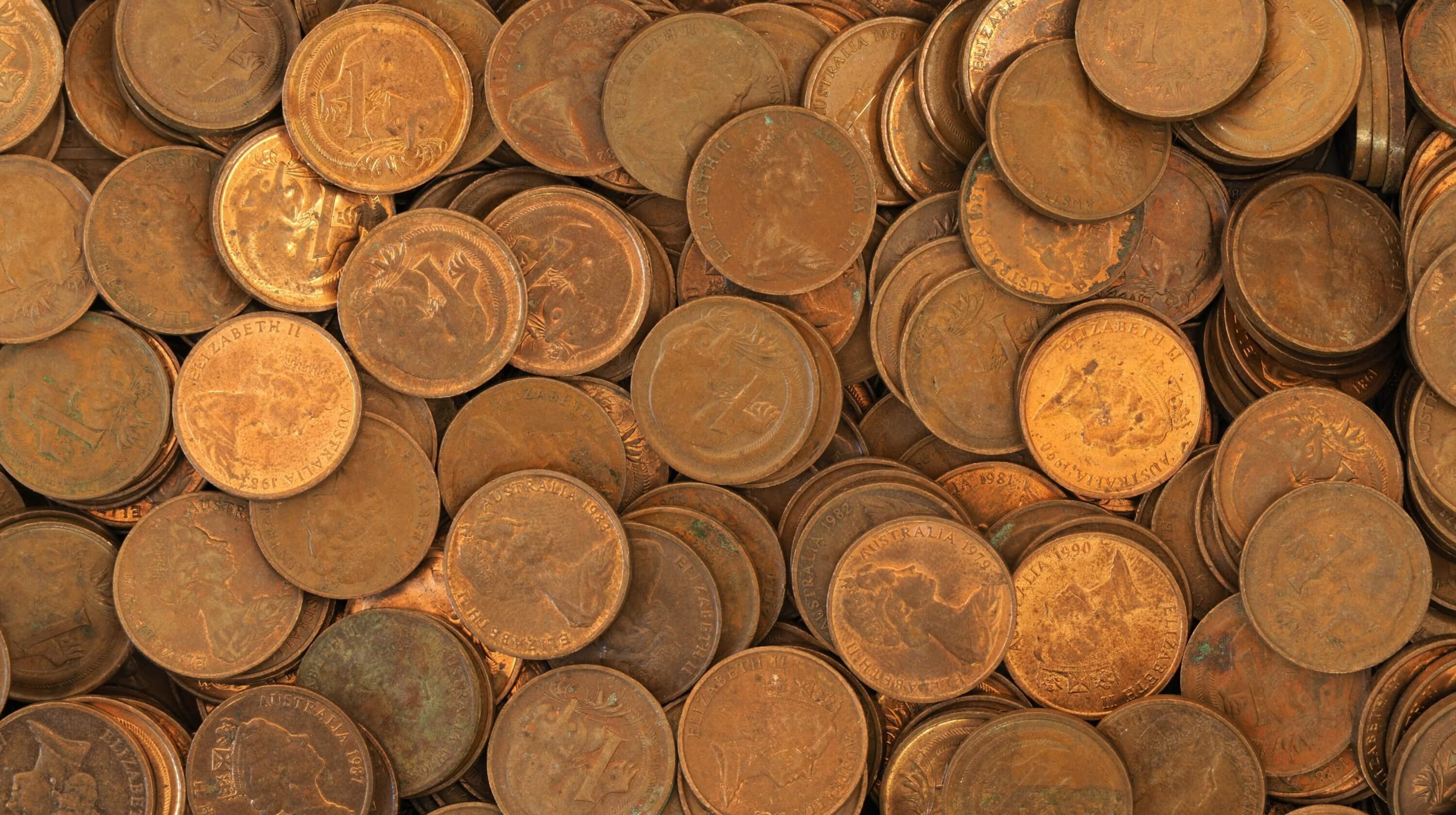Understanding financial statements, in particular your business balance sheet, is an essential part of running a successful venture whether large or small. A balance sheet can answer the key question “Is my business okay?” Here we’ll go through the different elements, with some balance sheet examples, and show you how to pull together the numbers you need.
Balance sheets are useful in applying for loans or investment funding.
A balance sheet is an important document for business owners and investors alike to evaluate the worth of a business. It provides a big-picture overview of the financial health of the business at a specific point in time, and is usually produced at the end of a month, quarter or financial year.
In a nutshell, a balance sheet will tell you how much money you’d have left over if you sold off all your assets and paid off all your debts.
What is in a balance sheet?
A balance sheet consists of three elements:
Assets: what your business owns (e.g. cash, inventory, land, equipment, etc).
Liabilities: what your business owes (money you owe suppliers, salaries/wages, interest on loans, taxes, etc)
Equity or Net Assets: what money is left over for you, the owner
These three elements are then applied in the accounting equation:
Assets = Liabilities + Owner’s Equity
Assets are listed on one side of the equation and liabilities plus equity are listed on the other side. It’s called a balance sheet because the two sides of the equation must balance out.
Your business assets must always equal liabilities plus owner’s equity.
The difference between your assets and liabilities is the net worth of your business. It’s only by completing this formula that you can accurately answer the question, “Is my business going to be okay?”
If your balance sheet doesn’t balance, it’s an indication that the figures are incorrect, which can impact the accuracy of your financial reporting to the ATO (Australian Taxation Office).
There is accounting software you can use to help with your balance sheet reports. You can also ask an accountant to help prepare your balance sheet.
Now let’s break down the three main elements.
Assets
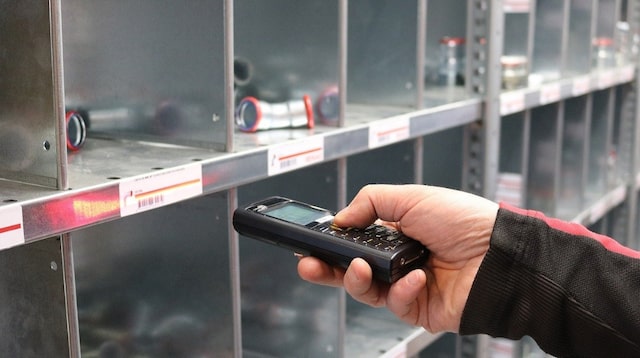
Your business assets are all the things your business owns that have a dollar value. They are usually listed in order of how quickly and easily they can be turned into cash (called liquidity), and are typically classified into three categories:
1. Current assets
These include all cash and any assets that can be converted to cash within 12 months, such as:
- Money in your bank accounts
- Petty cash
- Accounts receivable (money owed to you by your clients)
- Short-term investments
- Stock or inventory
2. Fixed assets
Long-term assets are called fixed assets and usually have a long-term benefit for your business. Some examples:
- Buildings and land
- Office equipment and tools
- Machinery and vehicles
3. Intangible assets
You may also own non-physical assets such as:
- Patents and trademarks
- Goodwill — in other words, the reputation of your business among your customers and community
- Intellectual property including knowledge, information or processes that are unique to your business
Action: Make a list of all the assets in your business (current, fixed and intangible) in order of liquidity, including the dollar value of each asset.
Liabilities
Next on the list are your liabilities — in other words, what your business owes. As with assets, these are classified as either current/short-term liabilities (due within 12 months) or non-current/long-term liabilities (due in more than 12 months).
1. Current or short-term liabilities:
- Credit card balances
- Accounts payable (what you owe to suppliers and vendors)
- Rent and utilities
- Wages owed to employees for hours already worked
- Loans that need to be paid back within 12 months
- Interest payable
- Income tax
2. Non-current or long-term liabilities:
- Loans that don’t need to be paid back within 12 months
Action: Make a list of all the liabilities in your business in order of how soon they must be repaid (within the year or beyond), and the amounts owing for each.
Owner’s equity
Equity is the money held by your business. It’s called ‘owner’s equity’ if you’re a sole trader or in a partnership, and ‘stockholder’s equity’ for companies and corporations. It’s also known as ‘net assets,’ as it’s the sum total of your business assets minus its liabilities.
Equity can include:
- Capital — any money invested into the business by the owners
- Private or public stock
- Retained earnings (all your revenue minus your expenses)
Action: Make a list of the equity currently in your business, including the dollar value.
Depreciation
Every time you use one of the fixed business assets — a delivery van or piece of equipment — it loses value.
As per Australian tax law, you need to depreciate your fixed assets over time to accurately reflect the declining value of the asset. So it’s important to factor in depreciation when calculating your balance sheet.
You can use this decline in value calculator to help you work out the rate of depreciation.
Balance sheet examples
Now that you’ve listed your assets, liabilities and equity, it’s time to plug these figures into a balance sheet.
You can create your own or download a balance sheet template like the one below from the Australian government business website.
Balance sheet example #1 (report format)
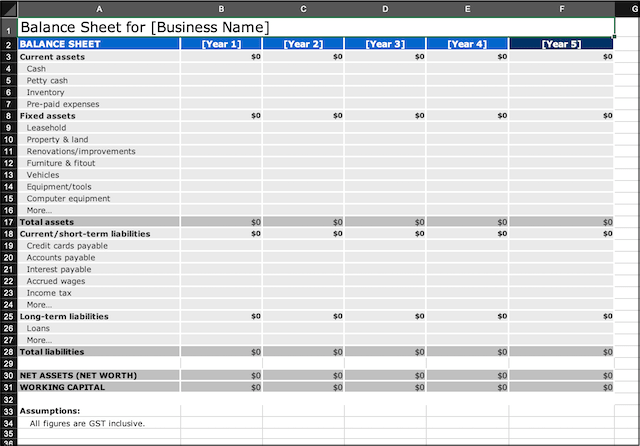
Source: Business.gov.au
A balance sheet can be formatted either vertically as shown above or with two columns side by side (below).
- In the vertical (report) format, assets are listed first followed by liabilities and owner’s equity.
- In the two-column (account) format, assets are listed in the left column with liabilities and owner’s equity listed on the right.
Balance sheet example #2 (account format)
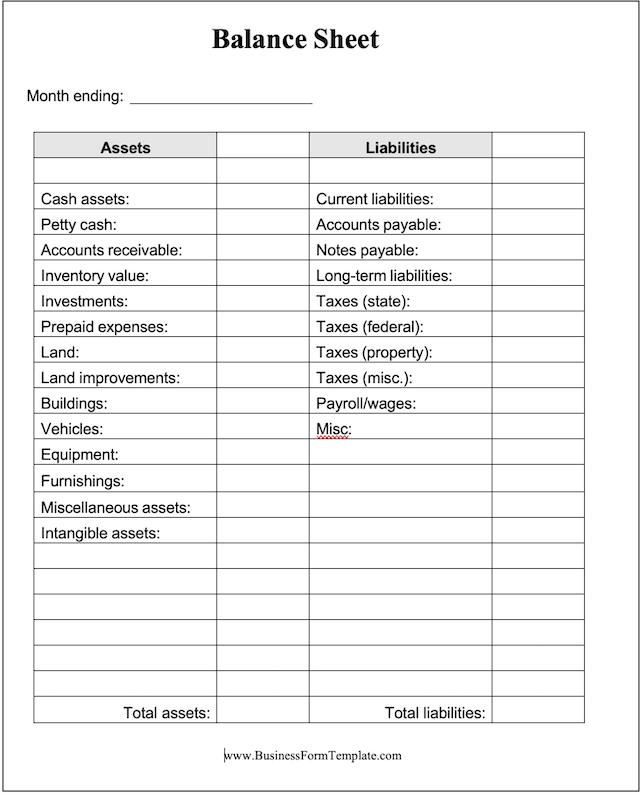
Source: BusinessFormTemplate.com
Action: Add up all of your assets, liabilities and equity. Then calculate total assets minus total liabilities. If your assets equal your liabilities plus equity, well done — your balance sheet is balanced! If not, go back over your figures to work out where the error might be.
How is your business doing?
No matter the size of your business, a balance sheet is a key financial document for you. By assessing your financial health, a balance sheet can help you attract investors, buyers or lenders.
Taking the time to do a balance sheet regularly — at the end of each month, quarter or year — will help you stay on track for strong business growth. Whenever necessary, talk to an accountant for tax or financial advice.
